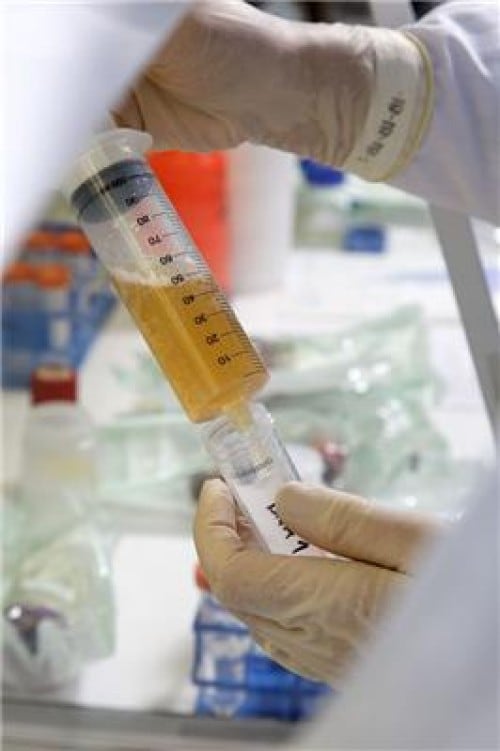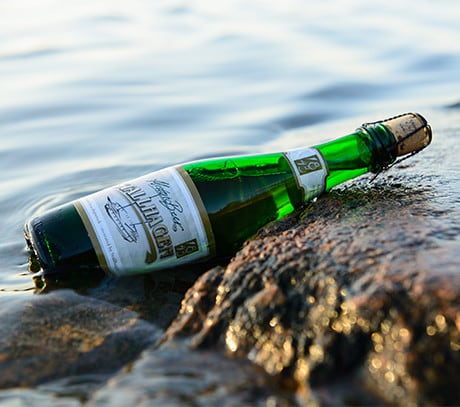Beer was recovered from a 1840s shipwreck in Finland, and scientists have published an analysis in the Journal of Agricultural and Food Chemistry.
What can today’s industry learn from the old beers, and is there interest in resurrecting old varieties? And – with 11 Champagne bottles from the ship auctioned at $156,000 in 2012 – does 170 year old beer have the same potential?
Destination unknown
In 2010 the shipwreck of a schooner (sailing vessel) was discovered 50m below the surface of the Baltic Sea near Åland Islands in Finland.
It is believed the ship sunk in the 1840s, although the name, destination and last port-of-call have not been identified.
150 bottles of champagne and five beer bottles were recovered from the wreck.

Scientists from Finland and Germany have analysed the beers and compared them with modern products, investigating aspects such as amino acid composition, yeast-derived flavour compounds, fermentable sugars, and carbonyl compounds; as well as the beer bottles.
Brian Gibson, a senior research scientist at VTT Technical Research Centre Finland, and one of the study’s authors, told BeverageDaily.com studying shipwrecked beer can help the industry understand the effect of age on beer quality.
“I think that these beers are relevant to modern brewing in a couple of ways,” he said. “Shelf life is a major concern for the modern brewer and many studies have been carried out to determine the effect of age on beer quality. However, most studies have focussed on quite short time spans, such as months or occasionally years. To have a beer that’s been aged for 170 years is quite special.
“This can tell us what kind of long-term changes one can expect and which flavours are most susceptible to the effects of ageing. Previous studies had indicated, for example, that the banana aroma (3-methylbutylacetate) was sensitive to ageing. The shipwreck beers showed conclusively that this was the case – we found unusually low levels of this compound in the beers.
Special survival properties
“Another interesting finding was the fact that the beers contained several species of brewery-specific bacteria. These bacteria have been living in the beer since the ship went down. They clearly have very special survival properties.
“By learning more about the mechanisms that these bacteria use to survive such long times we can develop strategies to counteract these mechanisms - hopefully leading us to more efficient ways of reducing microbial spoilage of beer.”

Alongside the lessons from old beer, Gibson says there is interest in recreating old beers - in fact, these specific beers have already been recreated by Stallhagen, a brewery near the site of the shipwreck.
It launched its brew last October, using VTT’s research to determine alcohol content, colour and bitterness of the beer (you can watch how the beer was created below).
The living cells that were still present in the shipwrecked bottle could show what types of yeast and bacteria had been used to produce the beer. This was then combined with knowledge of history and traditions.
Unique samples
“Although at least one older (1825) beer sample has been reported, we are not aware of previous chemical analyses of any beer this old,” Gibson wrote in the study, which was published last month. “We compare[d] the physicochemical characteristics and flavor compound profiles of beer from two of these about 170-year-old bottles with those of modern beer.”
“These [shipwrecked] beers have not been stored under ideal conditions, as evidenced by some deterioration in quality. However, although both spontaneous and microbiologically driven chemical changes have occurred, the results give some indication of the original nature of the beers and the techniques used to manufacture them.”
And what about the potential of the shipwrecked beer itself? Shipwrecked wine, after all, has been sold at auction for extravagant sums: is there the same potential for shipwrecked beer?
Sadly, it would seem not.
“The predominant organoleptic [sensory] properties of both shipwreck beers were unpleasant - acidic, salty, burnt, sulfury, etc. These negative qualities masked any fruitiness, maltiness, or hopiness,” continued Gibson.
“The levels of several organic acids were unusually high in the shipwreck beers, which presumably caused their low pH and vinegary, goaty, and soured milk flavors.”
Recreating shipwrecked beer
